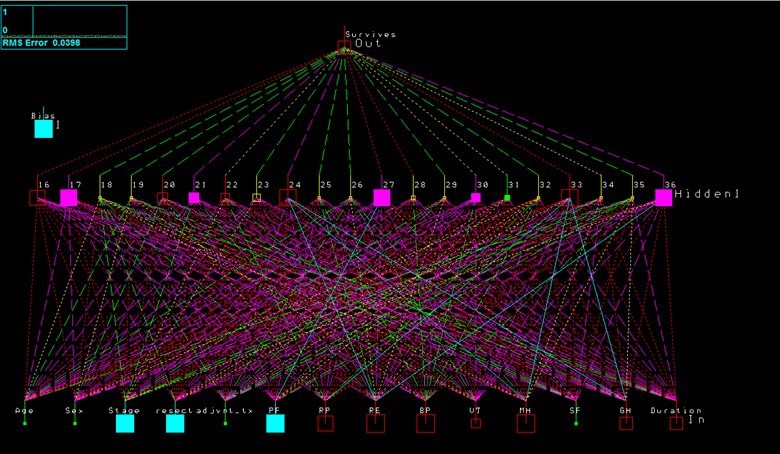
|
 |
Back to 2017 Posters
AN EVALUATION OF ARTIFICIAL NEURAL NETWORKS IN PREDICTING PANCREATIC CANCER SURVIVAL
Steven Walczak2, Vic Velanovich*1
1Surgery, University of South Florida, Tampa, FL; 2School of Information, University of South Florida, Tampa, FL
Background: Decision making in pancreatic adenocarcinoma can be complex with multiple factors involved in the decision. As surgical intervention is the best chance for control of the malignancy, but carries a high morbidity rate and can greatly affect postoperative quality of life. Therefore, the patient and clinician is left with the dilemma of when resection is appropriate. This is primarily based on anticipated survival after resection.
Aim: Develop a model for pancreatic adenocarcinoma patients to predict likelihood of survival at 7 months following operative intervention. An artificial neural network (ANN) approach is used to take advantage of the nonparametric and machine learning natures of this research method.
Methods: A database of 283 consecutive pancreatic adenocarcinoma patients were retrospectively examined, records with missing data are removed leaving 219 full data records. The records are divided into a 110 member training set and a 109 member evaluation set. Various ANN training algorithms and architectures, using 14 input variables: age, sex, stage, if a resection was performed, adjuvant treatment, and the SF-36 quality of life domains of Physical Functioning, Role-Physical, Role-Emotional, Bodily Pain, Vitality, Mental Health, Social Functioning, and General Health,and days since diagnosis.
Results: The demographic data of the patiens included in the training and evaluation sets were mean age 64 + 12 years (range 22-101 years), 56% male, 63% surviving > 7 months. A backpropagation trained ANN (Figure) performed the best overall and for specificity. A trade-off exists between sensitivity and specificity and a sensitivity of at least 90% is desired, to reduce costs of unnecessary resections when probability of survival is minimal. Results of the ANNs that produced the best overall accuracy, highest sensitivity, highest specificity, and highest specificity while still meeting the sensitivity requirements are shown in the Table. The recommended ANN maintains a greater than 90% sensitivity, but enables a higher specificity rate with a consequent but not significant reduction in overall accuracy.
Conclusions: Using nonparametric machine learning ANNs, enables the ANN to learn complex nonlinear interactions between the independent variables. The resulting predictions have a sensitivity of over 90% and also allow for a specificity of over 34%. The resulting survival predictions may be used to improve physician and patient decision making on whether or not to surgically intervene.
Results of Neural Network
| ANN architecture nodes: (input, hidden, output) | Overall Accuracy
( N = 109 )
| Sensitivity | Specificity | | Highest accuracy & specificity (14,7,1 nodes per layer) | 80.73% | 87.95% | 57.69% | | Highest sensitivity (15*,21,1 nodes per layer) | 76.15% | 96.39% | 11.54% | | Recommended tradeoff (14,21,1 nodes per layer) | 79.82% | 93.98% | 34.62% |

Back to 2017 Posters
|


